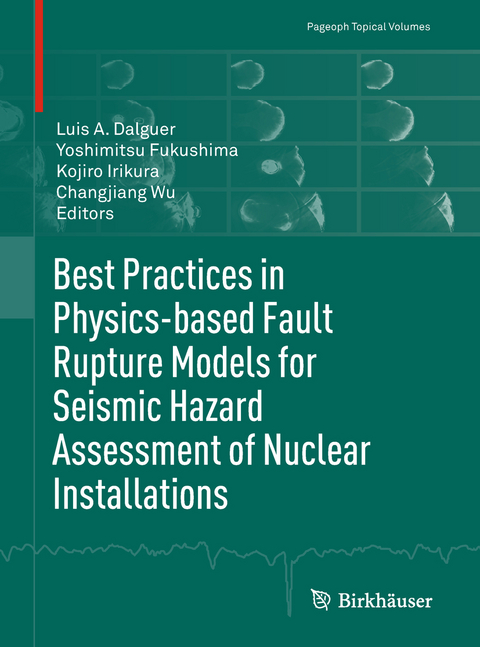
Best Practices in Physics-based Fault Rupture Models for Seismic Hazard Assessment of Nuclear Installations
Springer International Publishing (Verlag)
9783319727080 (ISBN)
Best Practices in Physics-Based Fault Rupture Models for Seismic Hazard Assessment of Nuclear Installations.- Surface Rupture Effects on Earthquake Moment-Area Scaling Relations.- Dynamic Rupture Modelling of the 1999 Düzce, Turkey Earthquake.- Dynamic Rupture Simulations Based on the Characterized Source Model of the 2011 Tohoku Earthquake.- Quantification of Fault-Zone Plasticity Effects with Spontaneous Rupture Simulations.- Synthetic Source Inversion Tests with the Full Complexity of Earthquake Source Processes, Including Both Supershear Rupture and Slip Reactivation.- Accounting for Fault Roughness in Pseudo-Dynamic Ground-Motion Simulations.- Within-Event and Between-Events Ground Motion Variability from Earthquake Rupture Scenarios.- Azimuthal Dependence of the Ground Motion Variability from Scenario Modeling of the 2014 Mw6.0 South Napa, California, Earthquake Using an Advanced Kinematic Source Model.- Near-Fault Broadband Ground Motion Simulations Using Empirical Green's Functions: Application to the Upper Rhine Graben (France-Germany) Case Study.- Broadband Ground Motion Simulation of the 2004 and 1977 Vrancea, Romania, Earthquakes Using Empirical Green's Function Method.- Mechanisms for Generation of Near-Fault Ground Motion Pulses for Dip-Slip Faulting.- Performance of Irikura Recipe Rupture Model Generator in Earthquake Ground Motion Simulations with Graves and Pitarka Hybrid Approach.- High Attenuation Rate for Shallow, Small Earthquakes in Japan.- Stochastic Earthquake Rupture Modeling Using Nonparametric Co-Regionalization.- Assessment of Simulated Ground Motions in Earthquake Engineering Practice: A Case Study for Duzce (Turkey).- Challenges Ahead for Nuclear Facility Site-Specific Seismic Hazard Assessment in France: The Alternative Energies and the Atomic Energy Commission (CEA) Vision.- Physics-Based Hazard Assessment for Critical Structures Near Large Earthquake Sources.
| Erscheinungsdatum | 19.01.2018 |
|---|---|
| Reihe/Serie | Pageoph Topical Volumes |
| Zusatzinfo | VI, 338 p. 212 illus., 155 illus. in color. |
| Verlagsort | Cham |
| Sprache | englisch |
| Maße | 193 x 260 mm |
| Gewicht | 718 g |
| Themenwelt | Naturwissenschaften ► Geowissenschaften ► Geologie |
| Naturwissenschaften ► Geowissenschaften ► Geophysik | |
| Schlagworte | broadband ground motion • dynamic rupture • earthquake cycle • empirical green's functions • empirical green’s functions • fault-zone plasticity • kinematic rupture • near-source ground motion • physics-based fault rupture models • probabilistic and deterministic approaches • seismic hazard assessments • source inversion • source-scaling • Stochastic Modeling • uncertainties quantification |
| ISBN-13 | 9783319727080 / 9783319727080 |
| Zustand | Neuware |
| Informationen gemäß Produktsicherheitsverordnung (GPSR) | |
| Haben Sie eine Frage zum Produkt? |
aus dem Bereich


